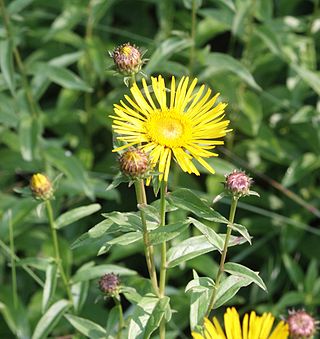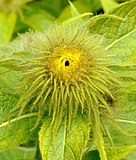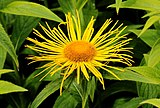
Nepeta is a genus of flowering plants in the family Lamiaceae. The genus name, from Latin nepeta (“catnip”), is reportedly in reference to Nepete, an ancient Etruscan city. There are 295 accepted species.

Onobrychis, the sainfoins, are a genus of Eurasian perennial herbaceous plants of the legume family (Fabaceae). About 206 species are presently accepted. The Flora Europaea lists 23 species of Onobrychis; the main centre of diversity extends from Central Asia to Iran, with 56 species – 27 of which are endemic – in the latter country alone. O. viciifolia is naturalized throughout many countries in Europe and North America grasslands on calcareous soils.

Heracleum is a genus of biennial and perennial herbs in the carrot family Apiaceae. They are found throughout the temperate northern hemisphere and in high mountains as far south as Ethiopia. Common names for the genus or its species include hogweed and cow parsnip.

Scorzonera is a genus of flowering plants in the tribe Cichorieae within the family Asteraceae.

Conyza is a genus of flowering plants in the family Asteraceae.

The Cardueae are a tribe of flowering plants in the daisy family (Asteraceae) and the subfamily Carduoideae. Most of them are commonly known as thistles; four of the best known genera are Carduus, Cynara, Cirsium, and Onopordum.

Rhaponticum is a genus of flowering plants in the tribe Cardueae within the family Asteraceae. As of November 2023, it is accepted by Plants of the World Online, but rejected by the Global Compositae Database in favour of Leuzea.

Pulicaria is a genus of flowering plant in the sunflower family, native to Europe, Asia, and Africa. In North America Pulicaria is known by the common name false fleabane.

Crucianella is a genus of flowering plants in the family Rubiaceae. The species are annual herbs found from the Mediterranean to Central Asia and the Arabian Peninsula. One species is naturalized in northern California, southern Oregon, and Idaho.

Jurinea is a genus of flowering plants in the family Asteraceae.

Pentanema is a genus of Asian and African plants in the tribe Inuleae within the family Asteraceae.

Pentanema salicinum is a plant species in the family Asteraceae. It is found across Eurasia from Portugal to Japan. It has been reported growing in the wild in a few scattered locations in North America but it has not become widely established there.

Pentanema squarrosum, known as ploughman's-spikenard, is a species of plant in the family Asteraceae found in Europe, North Africa, and the Near East.

Cota is a genus belonging to the chamomile tribe within the sunflower family. It is native to Europe, North Africa, and southwestern Asia, with a few species naturalized elsewhere. It is an herbaceous plant with flower heads including white or yellow ray florets and yellow disc florets.

Eremogone is a genus of flowering plants in the family Caryophyllaceae, native to western North America, northern Asia, eastern Europe and northeastern Africa. Attempts to resolve taxonomic relationships within the Caryophyllaceae have resulted in the enlargement of Eremogone with species from other genera.
Inula cordata may refer to two different species of plants:




















